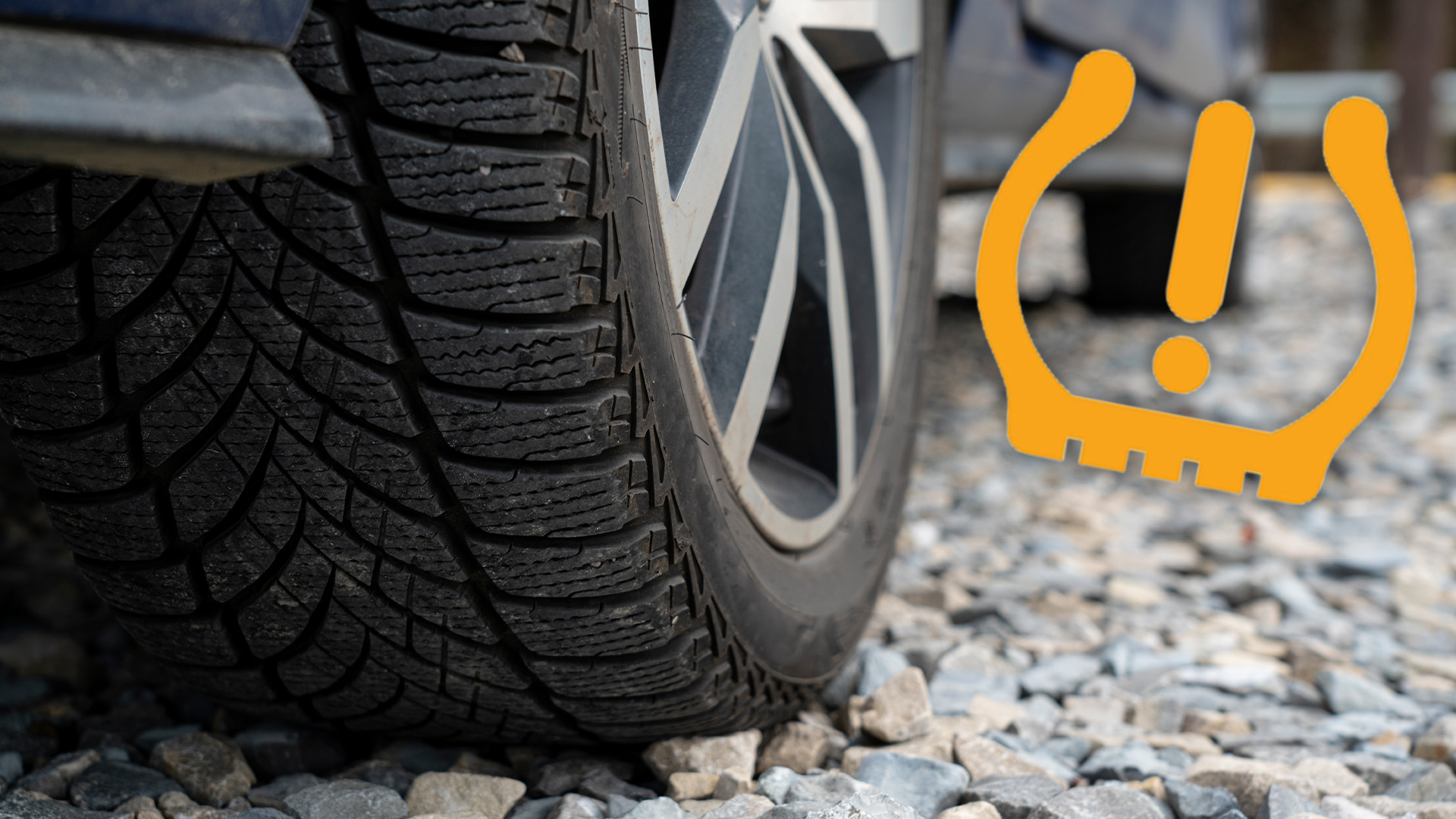

We may earn revenue from the products available on this page and participate in affiliate programs. Learn more ›
Starting your car in the morning is a pretty mindless task. The dash lights up but after a second, it all calms down. Sometimes, though, one of those little lights in the gauge cluster stays on, indicating that something is up. It’s the tire pressure light and now you’ve got to figure out why it’s on, along with how to fix it.
This can cause quite the panic, especially if you’re already running late for work. It doesn’t have to ruin your day, though, and it’s a lot better than realizing you have a flat once you hit the interstate. Your car’s tire pressure monitoring system (TPMS) can actually save you a lot of trouble.
In this article, we’ll explain exactly what a TPMS does and help you reset that pesky light so it doesn’t spike your blood pressure every time you turn the key.

What Is a TPMS Light?
Your vehicle’s tire pressure monitoring system is a type of sensor system that warns you when one or more of your tires are either over or underinflated. Automakers have a few options at their disposal in terms of the types of sensors used, but the general purpose is the same regardless.
While an illuminated TPMS light is enough to make anyone stop and sweat for a second, it’s not always mission-critical. Unlike the other, more serious warning lights, the TPMS light doesn’t always mean a trip to the mechanic.
What Does a TPMS Warning Light Mean?
Seeing that light with an exclamation point staring back at you can mean a few things. In many cases, it’s as benign as temperature changes causing a shift in the tires’ air pressure. In more serious cases, the tire has lost air due to a puncture or other damage. Overinflating your tires can also set off the sensor and cause the light to go off.

Is It Safe To Drive With TPMS Light On?
We’ll risk sounding like Debbie Downer here and tell you no. It’s not safe to drive around with your TPMS light illuminated. Without a tire inspection, there’s no way of knowing how quickly air is leaving your tire, or for how long it has been over or underinflated. The best course of action is to use a tire pressure gauge to check the current inflation level of each tire.
If the light comes on while you’re driving, slow down and get to the nearest gas or service station to inspect the tire.
How Do You Fix a TPMS Warning Light?
You can fix or solve a TPMS light in a few ways. You can take the vehicle to a service station to fill the tire or release enough air to get it to the proper inflation level. Inside your vehicle’s driver-side door, there is a small white and yellow label that will tell you what the cold air temperature should be. In other words, you’re going to need to wait a bit for the tires to cool off to get an accurate reading.
Do not inflate your tires to the level listed on the tire’s sidewall, as that number represents the maximum inflation level that a tire can withstand. Filling to that level will cause you to experience a bumpy ride and could lead to a blowout.
How Do You Know If You Have A Bad TPMS Sensor?
It’s normal for a TPMS light to show up and then disappear, especially when the weather is cool in the mornings and warm in the afternoons. The sign that you should have your TPMS sensors serviced is when the light blinks rapidly and does not stay solid or go away. This indicates that one or more sensors are bad, or that the system itself is malfunctioning in some way.

Pro Tips To Fix TPMS
- Pay attention to the light itself. Is it blinking or is it solid? Did it come on while you were driving, or was there a major shift in air temperature recently? It’s important to understand what you’re looking at.
- Don’t eyeball your tire pressures. It’s awfully tempting to just add some air to get the light to go off, especially if you don’t have a pressure gauge, but there’s no way you can know that you’ve inflated the tire to the proper levels. It can also cause you to have a blowout or poor ride quality if you’ve overinflated the tire.
- We hope you trust your tire shop at least a little bit, but even if you trust them with your life, you should be asking about how the TPMS sensors were replaced or transferred during a tire replacement visit.
- If you’re absolutely certain that you’ve inflated your tires to the proper level and that there is no physical damage to the tire itself, most vehicles offer the ability to reset the light from within the cabin. The exact process will depend on the type of vehicle you drive, but there’s usually some combination of pressing the trip-mileage reset button and turning the vehicle on and off.